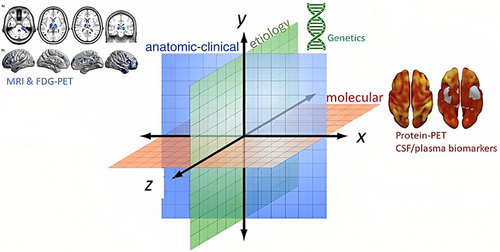Introduction:
Though a disproportionate rate of atrophy in the medial temporal lobe (MTA) represents a reliable marker of Alzheimer’s disease (AD) pathology, measurement of the MTA is not currently widely used in daily clinical practice. This is mainly because the methods available to date are sophisticated and difficult to implement in clinical practice (volumetric methods), are poorly explored (linear and planimetric methods), or lack objectivity (visual rating). Here, we aimed to compare the results of a manual planimetric measure (the yearly rate of absolute atrophy of the medial temporal lobe, 2D-yrA-MTL) with the results of an automated volumetric measure (the yearly rate of atrophy of the hippocampus, 3D-yrA-H).
Methods:
A series of 1.5T MRI studies on 290 subjects in the age range of 65–85 years, including patients with AD (n = 100), mild cognitive impairment (MCI) (n = 100), and matched controls (n = 90) from the AddNeuroMed study, were examined by two independent subgroups of researchers: one in charge of volumetric measures and the other in charge of planimetric measures.
Results:
The means of both methods were significantly different between AD and the other two diagnostic groups. In the differential diagnosis of AD against controls, 3D-yrA-H performed significantly better than 2D-yrA-MTL while differences were not statistically significant in the differential diagnosis of AD against MCI.
Conclusion:
Automated volumetry of the hippocampus is superior to manual planimetry of the MTL in the diagnosis of AD. Nevertheless, the 2D-yrAMTL is a simpler method that could be easily implemented in clinical practice when volumetry is not available.
Reference: Menéndez gonzález M, Suárez-Sanmartin E, García C, et al. (March 26, 2016) Manual Planimetry of the Medial Temporal Lobe Versus Automated Volumetry of the Hippocampus in the Diagnosis of Alzheimer's Disease. Cureus 8(3): e544. doi:10.7759/cureus.544 (Full text)

